Cork is a natural resource and a great alternative for Plastic. You'll find the material in everyday life in flooring, bottle caps, leather products and, of course, bulletin boards. In this article you will learn how cork is made, what advantages and disadvantages cork offers and how sustainable this natural raw material really is.
Before we get started, here's a little Overview about the article for you:
- Definition
- Production
- Sustainability
- Vegan substitute for leather
- Advantages and disadvantages
- Products
- Closing words
What is cork?
Cork is a material made from the bark of the cork oak tree. Cork as we know it is also made from the bark of the Asian Amur cork tree. From an economic point of view, the material is used, for example, in fishing as a float on fishing rods and nets. It is also used as bottle stoppers, pin boards and shoe inserts. Very popular is cork especially as flooring. But it is also used in the construction of wind instruments. Balls made of cork are produced for table soccer because they are much quieter to play with. As you can see, cork is used in many areas and makes life easier. Life without plastic immensely.
The natural resource cork has been extracted for many centuries and its largest producer is the country of Portugal. More about the production of cork I would like to explain to you now in the next paragraph.
How the cork production works
Since about 200 years A.D. Chr. the bark of the cork oak is further processed as cork in the Mediterranean region. The bark is peeled from trunks and main branches with cutting axes. During the first peeling, cork is suitable mainly for dark brown boards, which are used, for example, in thermal insulation. After the first peeling, another peeling can be done every 8 to 12 years. In this process, the so-called secondary cork bark is harvested. This is used, among other things, for the production of bottle corks. The remains of this production can also be reused. They are ground into small particles and then further processed with adhesives and other binding agents. The world's largest cork producer is Portugal, with a share of 50%. In the country, a full 28,000 people are employed in the cork industry.
The cork oak
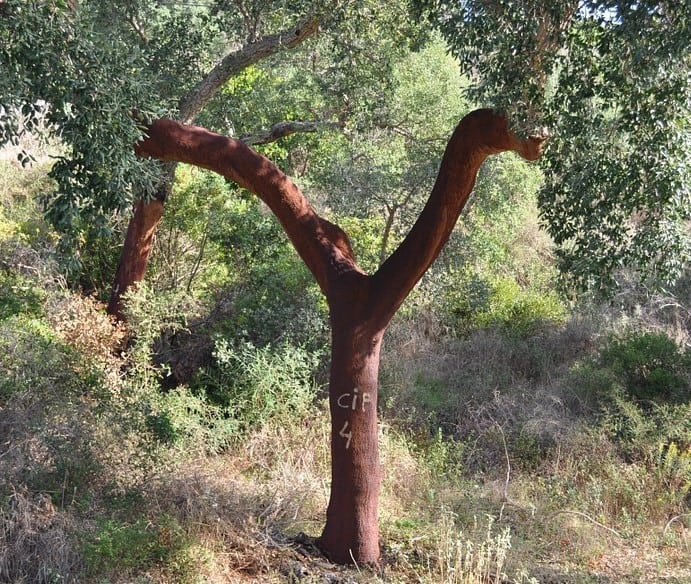
The oak can live up to 250 years, with 150 years productive for the extraction of cork. Once the tree is 20-25 years old, training is possible. The cork oak needs a trunk diameter of 70 cm and a height of 1.30 meters. About 50 kg of cork bark are extracted by hand per harvest. One oak tree produces about 700-1000 kg of cork in the course of its life.₁
Cork sustainability
Cork closures are the most sustainable option for bottle closures. Plastic corks consume 10 times more CO2 in their lifetime than conventional cork closures. Twist caps made of aluminum even produce 24 times more CO2.₂ In addition, the production process generates virtually no waste product. Of the energy used by the industry, 70% is now renewable. So the production of corks can be classified as very sustainable. The cork oak forests are home to 24 species of reptiles and amphibians, 160 species of birds and 37 different mammals. The Iberian lynx also lives in the forests, a species that is threatened with extinction (currently there are only 150 left). Cork oaks are very important for the ecosystem. Since the valuable trees are not cut down, but only harvested, the ecosystem does not become unbalanced. In fact, through reforestation, the area under cork oaks in Portugal grows by 4% annually. Therefore, the material cork can be seen as a sustainable alternative that helps, Plastic waste in the environment to avoid.
CO2 compensation
Cork oaks are true masters in the production of CO2. In the process, an oak tree, if harvested regularly, binds over three times as much CO2 as an unharvested oak tree. Around two million German two-person households are compensated per year by the cork forests alone. Thus, the production of cork contributes a large part to the Stop climate change at.
Long transport route
Sustainable materials such as cork also have disadvantages, of course. Since cork oaks can only grow under certain climatic conditions (e.g. in the Mediterranean region), transport distances are longer than for the regional extraction of wood. This in turn leads to an increased CO2 consumption. However, one must give cork credit for being a very light material.
Vegan substitute for leather
Leder sieht toll aus, ist atmungsaktiv und hat meistens eine sehr gute Qualität. Leider leiden jedoch die Tiere darunter. Denn Leder wird mit Chemikalien verarbeitet, die schädlich für deine Haut sind. Lange Zeit gab es nur Kunststoff aus Rohöl als vegane Leder-Alternative. Das hat sich mittlerweile zum Glück verändert! Das Unternehmen „Bleed Clothing“ stellt vegane Lederprodukte her – aus Kork!
Seit 6 Jahren stellt der Familienbetrieb „Bleed Clothing“ vegane Kleidung her. Die sustainable fashion ist ebenfalls atmungsaktiv, sehr strapazierfähig und spritzwasserdicht. Dazu kommt, dass das Material wärmt und im Gegensatz zu Leder waschbar ist.
Advantages and disadvantages of cork
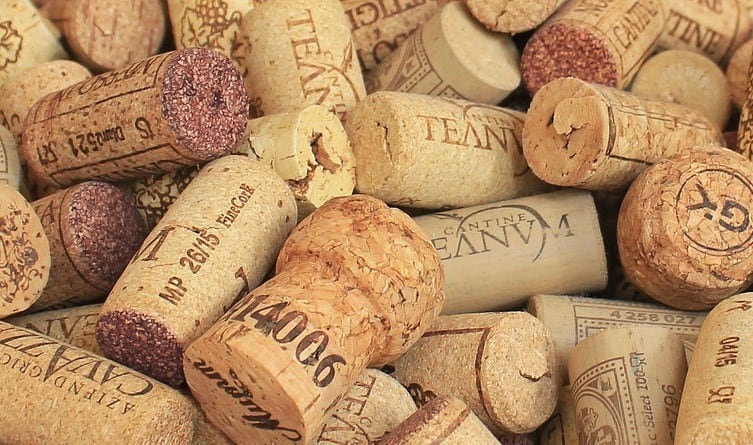
As you can see, the use of cork brings many advantages, but also some negative aspects. Here I have once again compiled a table with the advantages and disadvantages of cork. Can you think of any other points? With a comment under this article I like to expand this overview.
| Advantages | Disadvantages |
| Sustainable | Long transport route |
| Tasteless and odorless | Thick cork floor is not suitable for underfloor heating |
| Heat resistant | Slightly brittle |
| Water repellent | |
| Easy | |
| Vegan substitute to leather | |
| Compensation of CO2 |
Classic products from cork
Now I would like to introduce you to some more sustainable products made from cork.
Vintage car with cork tires
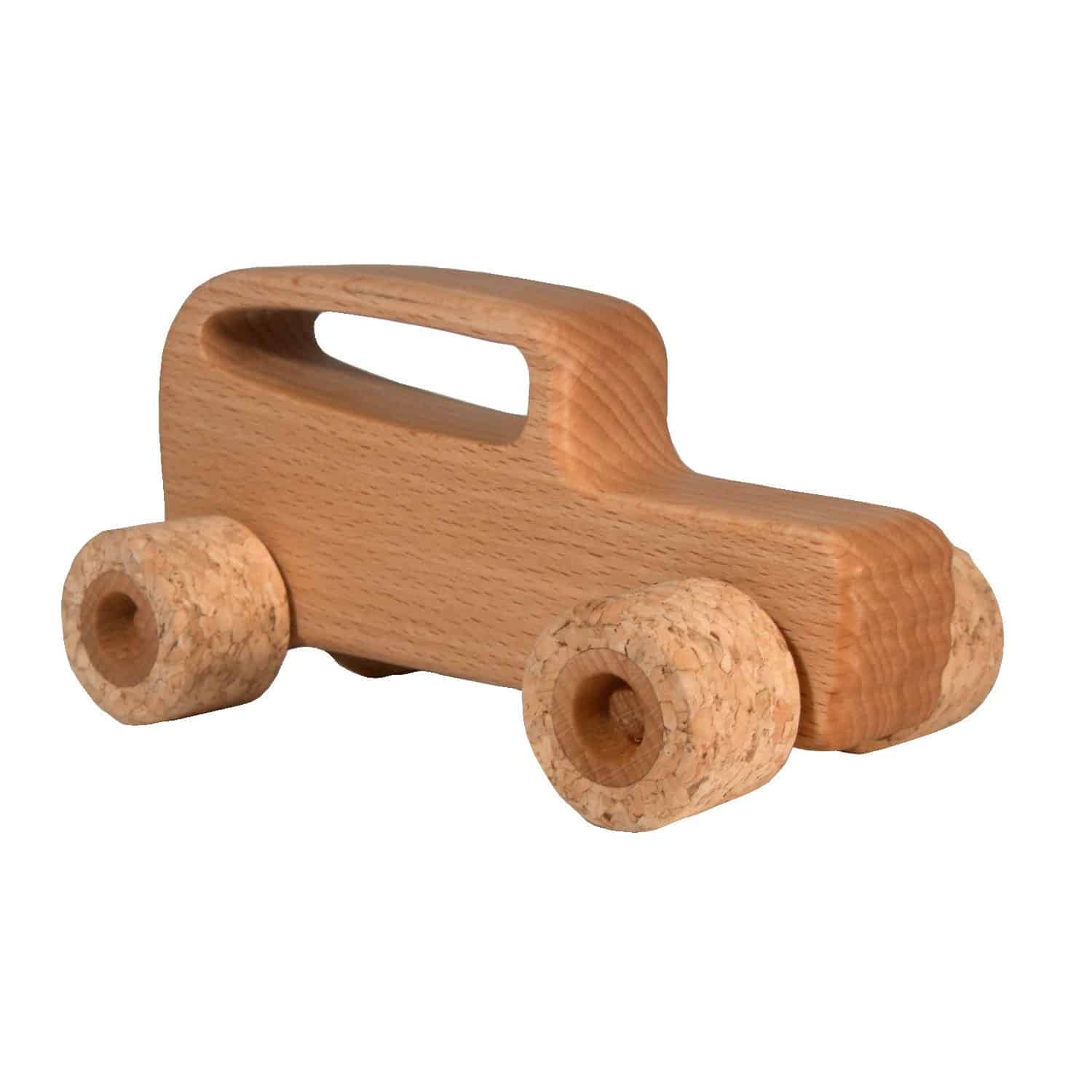
Especially with Children's toys plastic should be avoided in order to Protect babies and children from plasticizers. This toy car for children over 18 months is made of wood. Cork is gentle on the parquet floor and ensures that the tires do not make noise. Thanks to the cork you have (almost) absolute silence while your child plays.
Cork yoga block
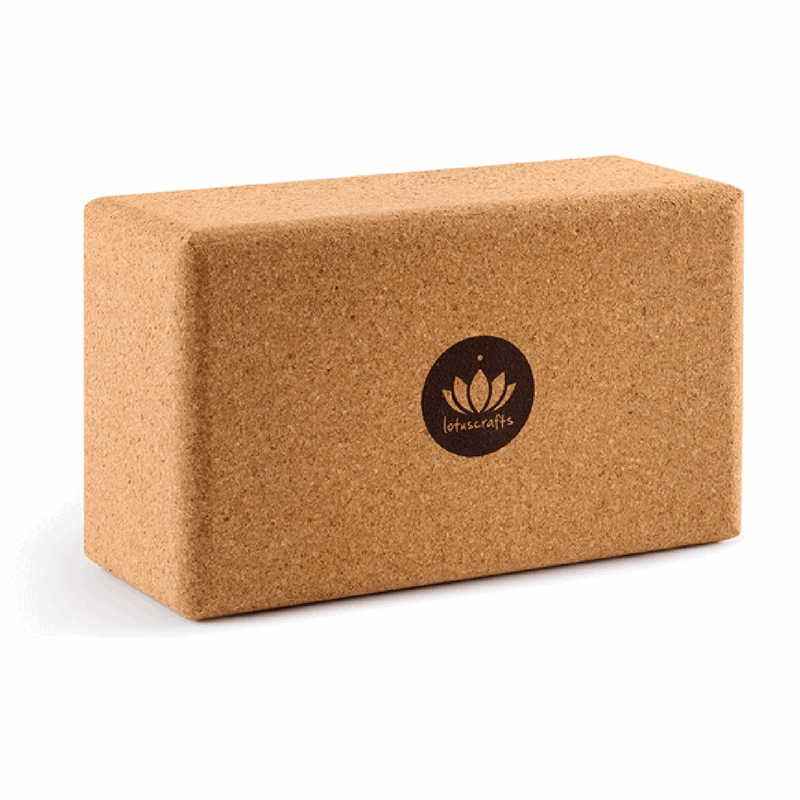
The Natural cork yoga block helps you with yoga training. Thanks to the cork, the surface of the yoga block is very grippy and non-slip. It is free from harmful substances and is also suitable for Pilates in addition to yoga exercises. The natural yoga block supports you while performing asanas and is suitable for beginners as well as for advanced practitioners. Here you get the yoga block from cork*.
Cork mule
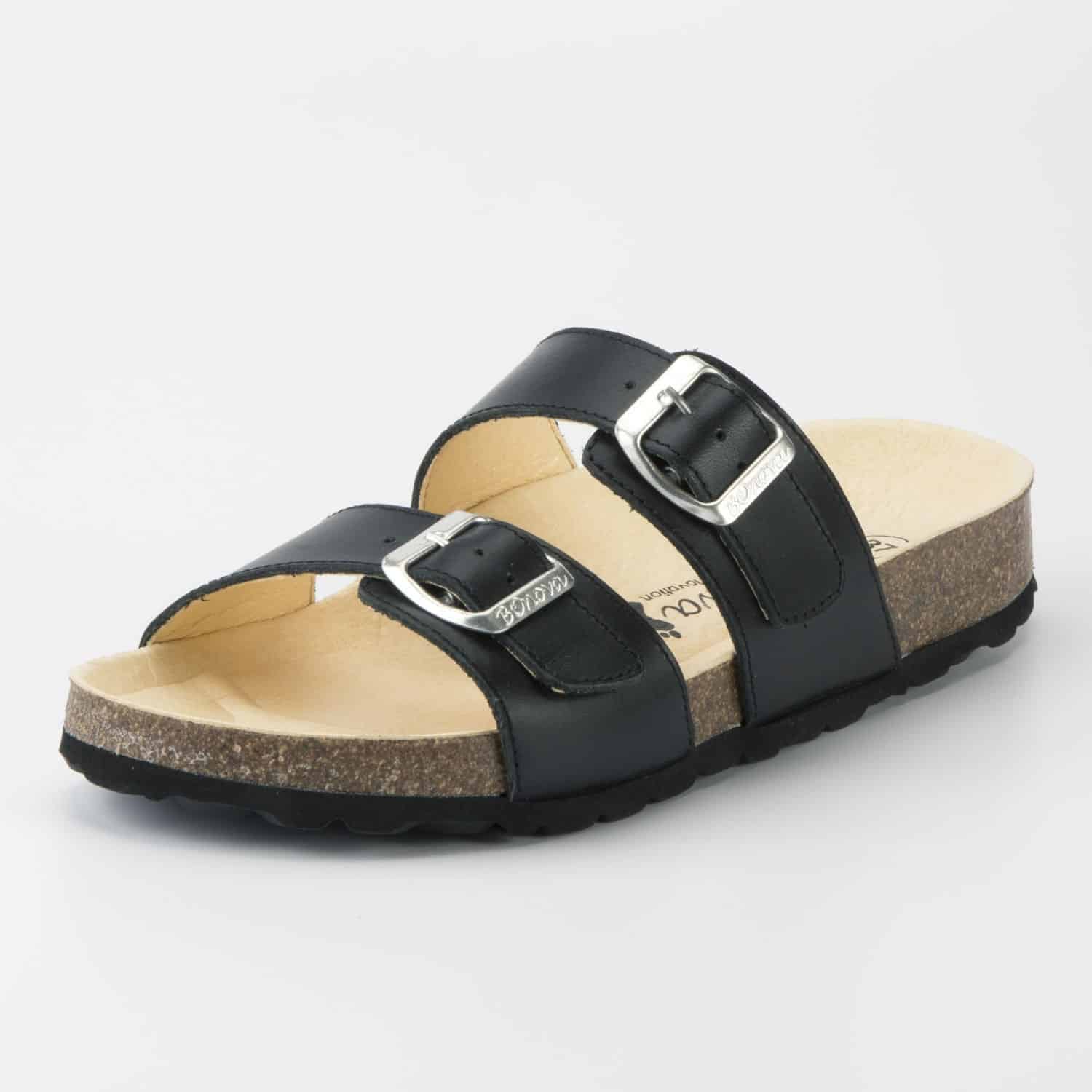
You can wear this mule made of soft cow nubuck leather all year round. The decorative XL metal buckles are adjustable. The ergonomic deep footbed made of cork/latex with slip-resistant EVA sole ensures a good step. The upper leather is chrome-free tanned, the lining leather/cover sole is vegetable tanned. The deep footbed is made of cork. The mules are produced in Spain.
Cork world map pinboard
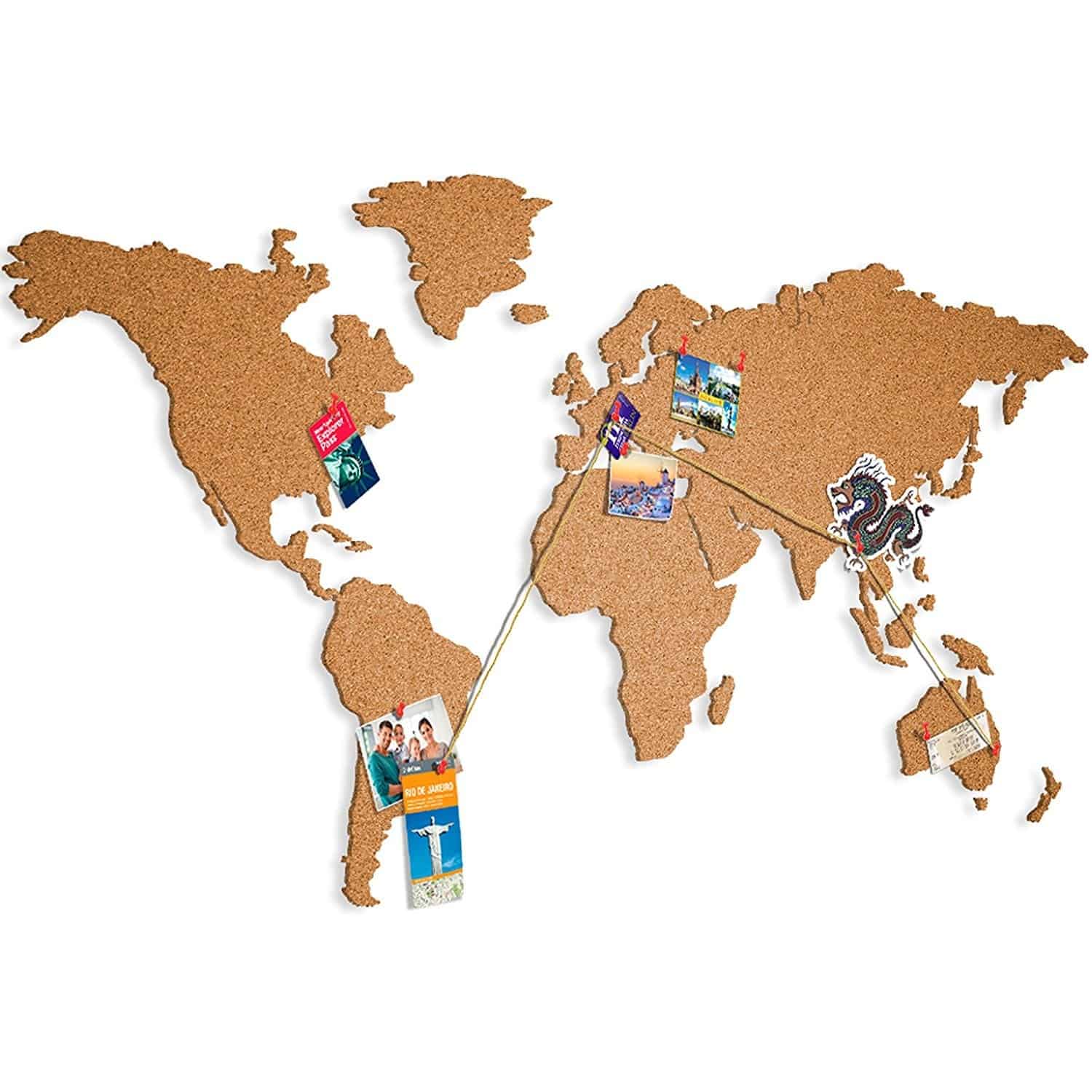
The world map pinboard is 100% made of cork and is therefore very sustainable. Perfect as a gift for world travelers who want to take care of the environment. Thanks to the self-adhesive back, it can be easily attached to the wall. It is available in different colors. Get the world map pinboard here*.
Bag
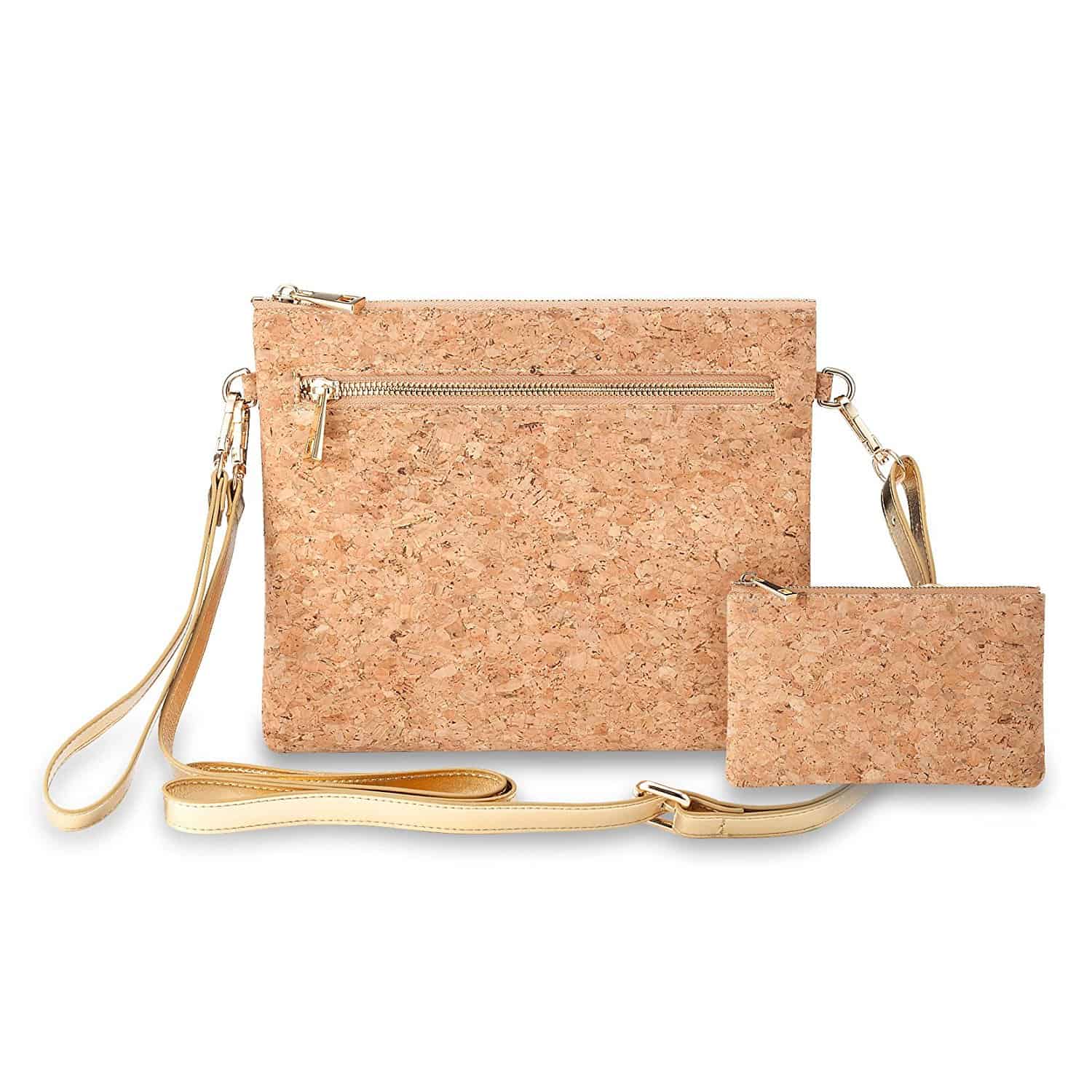
The bag is made of cork and is completely vegan. Nevertheless, it is as strong as PU leather. The fabric is waterproof, stain resistant and soft. In the small purse you can store cards, keys, coins, cash and small items. Visually, the bag made of cork is a real eye-catcher and something different! You can get the cork bags here*.
Cork as flooring
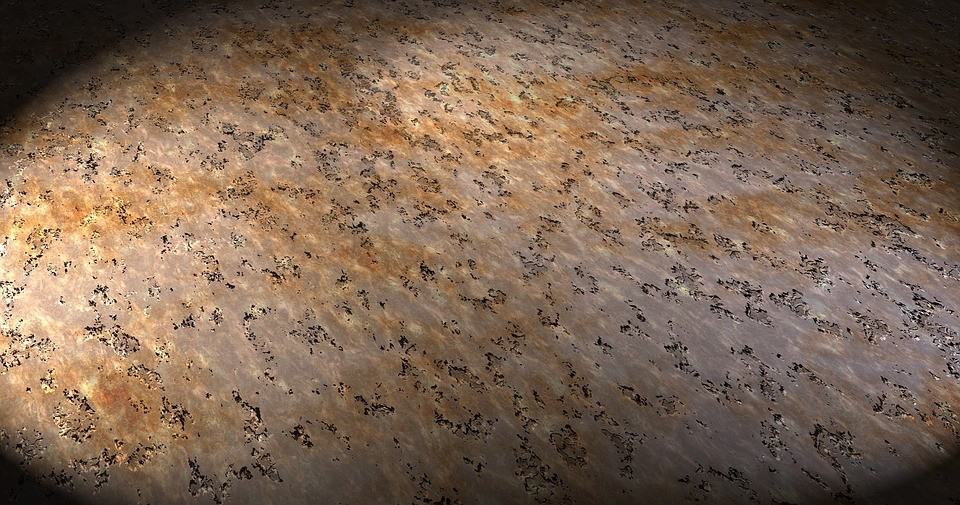
Adhesive cork comes in different shapes, colors and sizes. From classic wood tones to modern colors, such as black, gray or white, the floors are available. More unusual designs such as check patterns are also possible. The floor is installed as solid tiles, which are glued to the substrate and then sealed. In addition to cork tiles, there is also cork parquet. The parquet is glued together or clicked together with the help of tongue and groove. Cork is easy to care for, water repellent, sound absorbent, warm to the feet, insulating and flexible. Plus, you're doing something good for the environment when you choose a cork floor.
Does the use of cork make sense?
Yes, definitely! Due to the sustainability of the production of cork and the good quality of the material, there are hardly any disadvantages in relation to cork. As you could see, cork is recyclable and harvesting oak trees has little impact on the habitat of animals and other plants compared to other materials. Especially for flooring cork is very popular.
Do you have any questions, suggestions or tips on this topic? Then leave me a comment below this article.
Kind regards,

PS: In the article Build standing desk yourself you will learn how to build your own standing desk from old wood. And in the article Zero Waste Lifestyle we provide tips and tricks for a waste-free everyday life. Have fun trying them out!
References:
₁ http://natuerlichkork.de/nachhaltigkeit/korkfakten
₂ LCA study by Pricewaterhousecoopers 2008

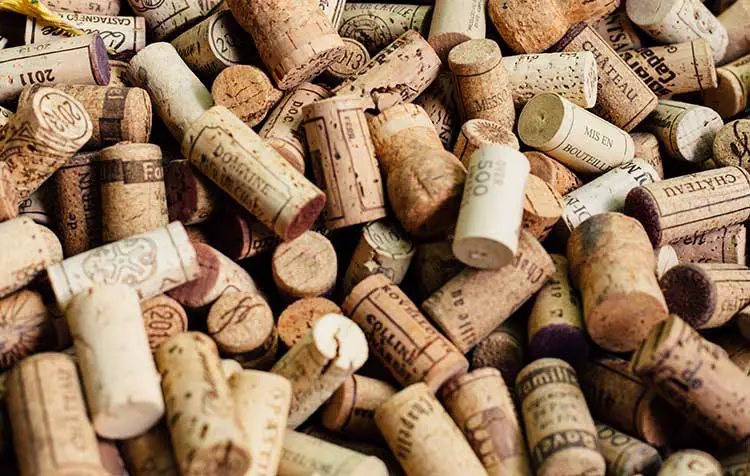




I came across the article by searching for sustainable flooring. My husband and I are looking for an alternative to our PVC floor. Cork parquet I think sounds very interesting. Thanks for the tip!
Hello Franziska! Glad you found the article helpful. Feel free to write us your feedback on the floor, should you have decided to do so 🙂
Many greetings
Christoph
Hello Tabea!
A great contribution! I am also interested after many visits to Portugal for a long time on the subject of cork. You made a small mistake in the section "sustainability": it is not the Iberian fox, which has found one of its last retreats in the cork oak forests, but the Iberian lynx :). Another endangered species is also native here: the Spanish Imperial Eagle. In general, it can be said that the southern European cork oak forests are the most species-rich habitat in all of Europe.
I distribute since the beginning of 2018 with a small online store sustainable bags made of cork. All made of Portuguese cork and handmade there in small factories by specialists. The bags have really many advantages over those made of leather.
There is also a lot of other info about cork there.
Many greetings!
Andreas
Hello Andreas,
ohhh, thanks for the tip! Is corrected.
Great, I wish you maximum success with your project, looks great 🙂 .
Many greetings, Christoph
Comments are closed.